DJI Flip vs DJI Neo: which of these new type of multi-use drones is best for beginners?
Can the new content creator-friendly DJI Flip surpass the budget king DJI Neo from 2024?
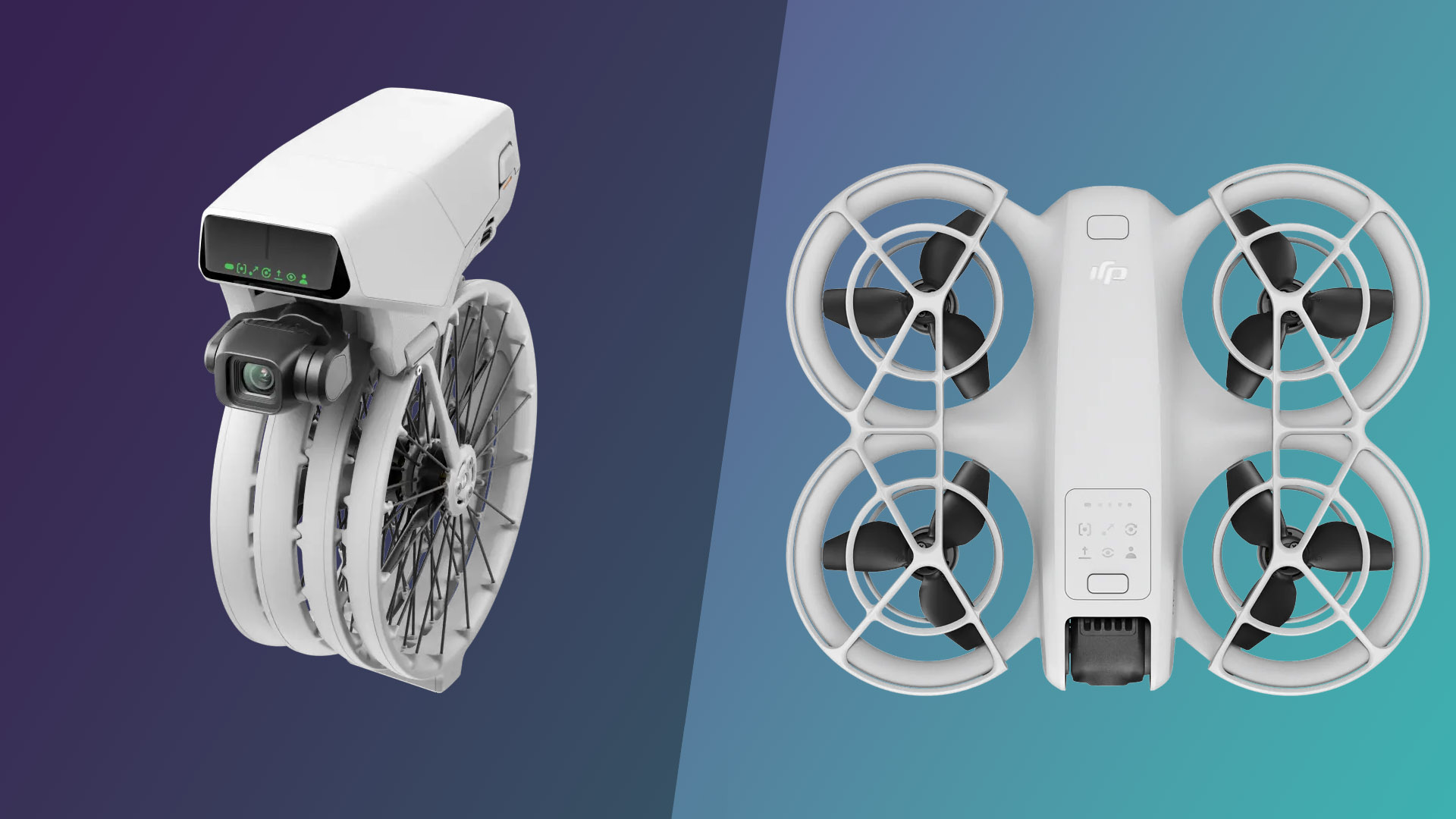
A drone like we've never seen before, with unique folding propellor design and decent 4K video capabilities, but it's quite a leap in price from the Neo.
For
- Multi-use functionality
- Several flight-control options
- Sub-250g folding design
Against
- Image quality is good but not great
- Not as agile as the Mini 4 Pro
- Not great in wind
DJI's cheapest 4K drone can be flown safely multiple ways thanks to propellor guards; for selfies, FPV, but it's tiny and has limited camera performance.
For
- Small and lightweight
- Easy to use
- Multiple flight control options
Against
- Only shoots photos in JPEG
- 4K video fixed at 30fps
- Expensive to add on goggles and FPV controller
The DJI Flip arrives just a few months after the 2024 DJI Neo to provide yet another option for folks out to buy their first drone. We’re here to work out if the Flip is a better buy. It’s more expensive, but also a lot more capable. So should you spend the extra?
DJI’s Flip drone roughly combines the ease of use of the Neo with the superior camera and flight skills of the DJI Mini 4K. And there are some other bonuses to boot.
There is one mode the DJI Neo has that the Flip lacks, though — FPV, where you use a motion controller and a headset to fly in a more acrobatic style.
As such, the DJI Flip is clearly a better content creator drone, but the DJI Neo provides a taste of all flavors of the drone hobby.
We’re going to dig a little deeper into all areas in which the DJI Neo and DJI Flip excel, to work out which is the better buy for you.
We'd also be remiss not to mention the HoverAir X1 Pro, another excellent tiny drone with propellor guards for closeup flight and auto-tracking features.
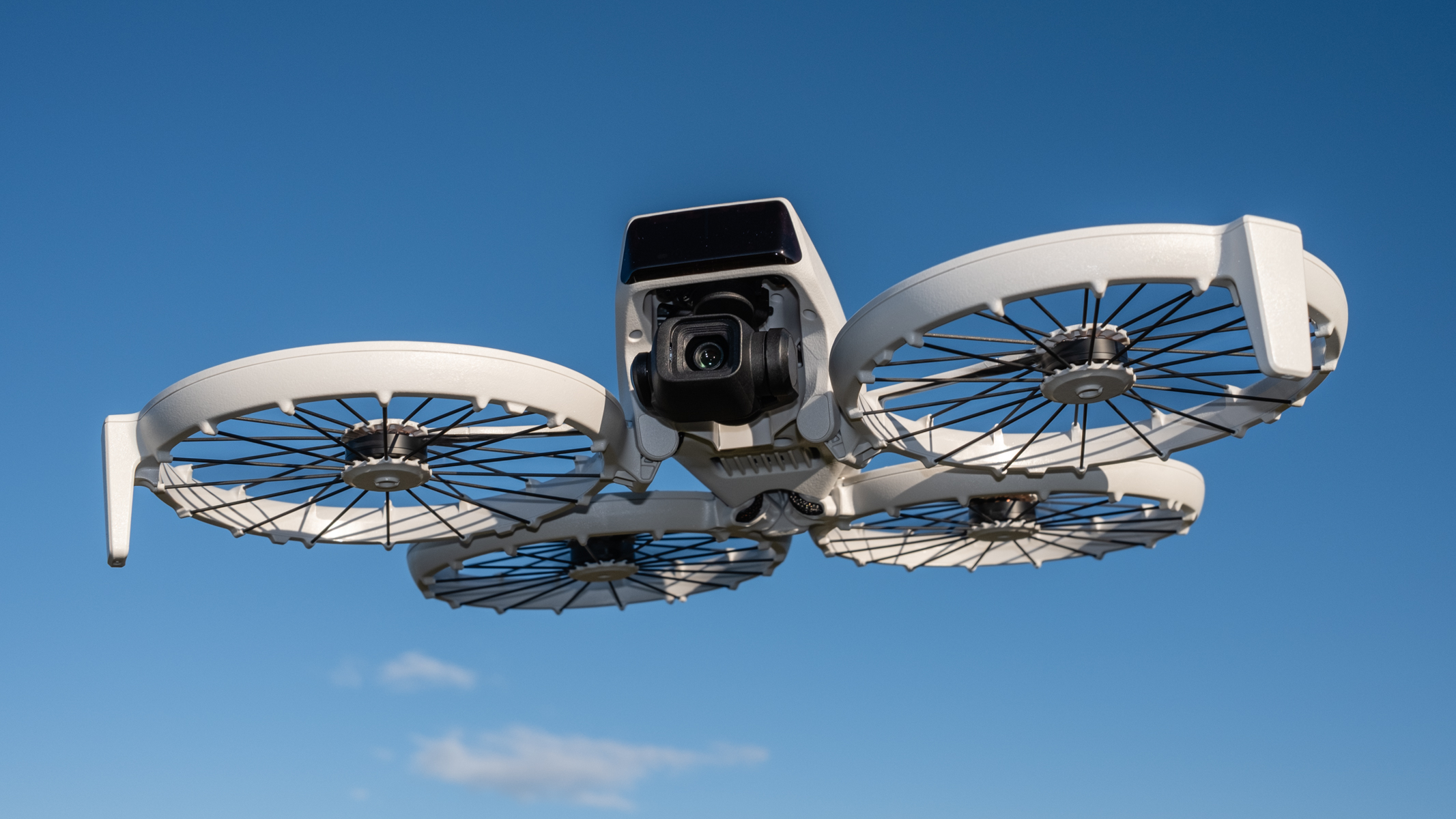
1. DJI Flip vs DJI Neo: Price and Availability
- DJI Flip with DJI RC-N3 controller: $439 /£369 / AU$699
- DJI Neo: starts at $199/ £169 / AU$299, increases in price if you want controller
The DJI Neo is roughly four months older than the DJI Flip. It was announced in September 2024, compared to January 2025 for the Flip.
DJI’s Neo is substantially cheaper, but it’s not quite as simple as it may appear at first.
The DJI Neo starts at $199 / £169 / AU$299, the DJI Flip $439 / £369 / AU$699. It’s not quite as huge a disparity as those numbers suggest, though, because the Neo does not include a controller.
A controller bundle isn’t actually widely available in the US, although you can pick one up in the UK as part of the three-battery Fly More combo for £299.
There’s also a Neo FPV-friendly combo for £449, which adds the Goggles N3 headset and RC Motion 3 controller.
You have a couple more options when buying the DJI Flip. There’s a bundle with the RC 2 controller (with baked in screen) for $639 / £549 / AU$949. Or the classic Fly More combo with that RC 2 controller, two additional batteries, charger and bag for $779 /£659 / AU$1,159.
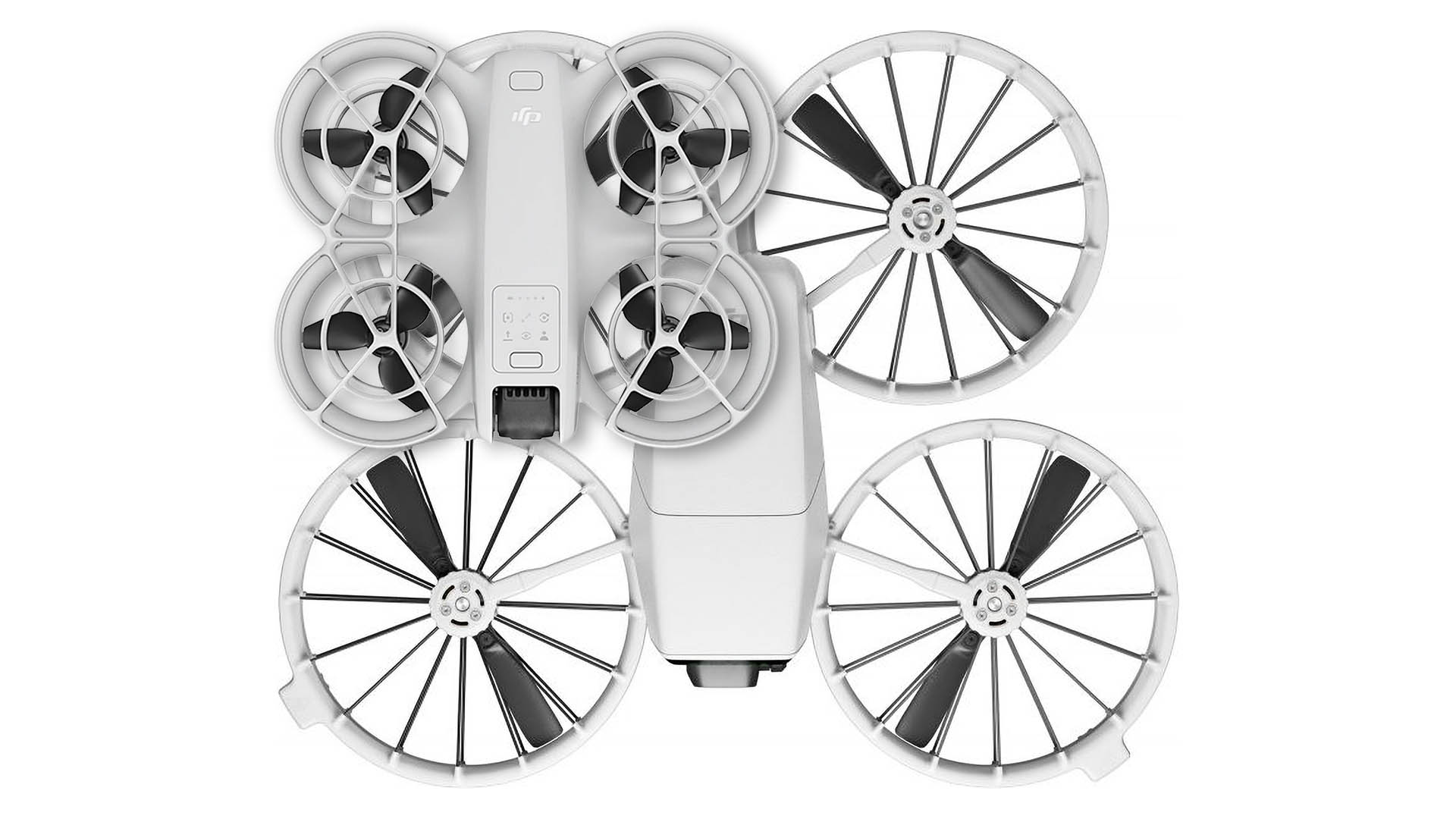
2. DJI Flip vs DJI Neo: Design
- DJI Flip: 249g, folding propellors, 2GB internal storage plus micro SD
- DJI Neo: 135g, tiny 130×157×48.5 mm, 22GB internal storage only
The DJI Flip is much larger than the DJI Neo, but not in a way that will significantly hinder how you can use it. A DJI Flip measures 233×280×79 mm, but when the propellors are folded back down for storage it’s just 136×165x62mm. That’s fairly close to the 130×157×48.5 mm of the Neo. It doesn’t fold, and doesn’t really need to at that size.
The Neo is a lot lighter too, at 135g. But as the DJI Flip just scoots in at under the 249g limit for unregistered drones, it’s not much of a practical concern. And that includes the blade guards typically left off of weight calculations in these mini-size drones.
You will need to bring your own microSD card for the Flip, though. It has just 2GB internal storage — basically an emergency solution should you forget your card.
The DJI Neo has 22GB onboard storage, but there’s no way to expand upon that. It’s less restrictive than it might sound given the short battery life of the drone, but does mean you’ll need to clear out space regularly.
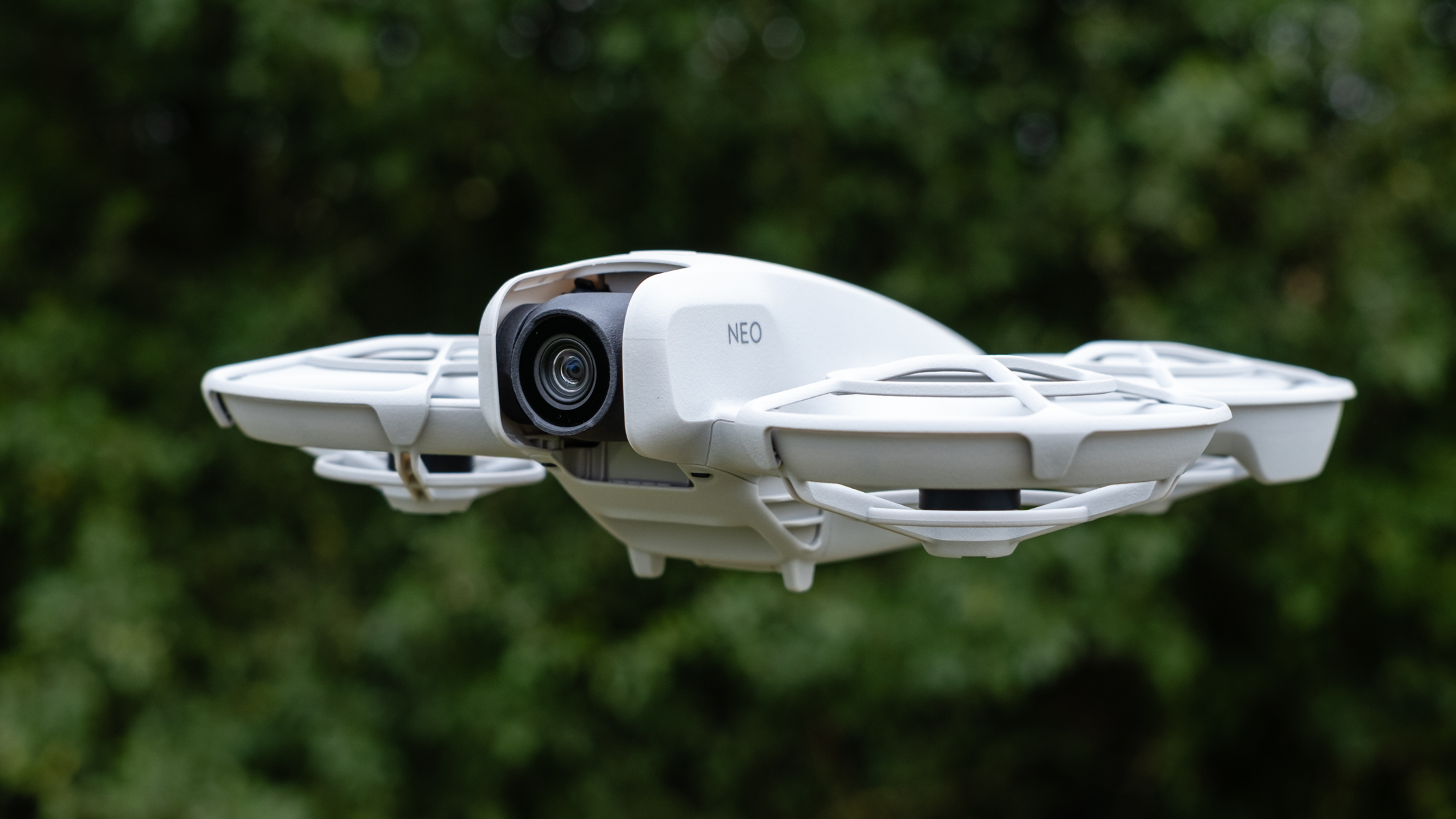
3. DJI Flip vs DJI Neo: Flight Modes
- DJI Flip: active person-tracking, intelligent flight moves, better wind resistance and speed
- DJI Neo: active person-tracking, intelligent flight moves, FPV flight
DJI made the Flip and Neo to cater for the kind of person who wants a drone to act like a virtual camera person. They can both lift off from your hand, and support an active person-tracking mode that follows you around.
This is perfect for YouTube B-roll, an affordable way to give your videos a very expensive look. Both drones support the following “intelligent modes,” which program the movements relative to your subject: Follow, Dronie, Circle, Rocket, Spotlight, Helix and Boomerang.
You can also control these drones manually, although in the US at least DJI makes it a little trickier to get a good deal for a Neo bundle that includes a controller.
This is more a sign the DJI Neo is a true beginner’s drone, where the DJI Flip is a more focused tool for content creators. For example, it has better wind resistance than the Neo, rated at 10.7m/s versus 8m/s speeds.
The Flip is not ideal on this front thanks to its drag-increasing blade guards, but is nevertheless an upgrade. It’s also an all-round more powerful drone than the Neo.
It can reach ascent and descent speeds of 5 m/s in its tracking modes, compared to 2m/s with the Neo. And when flying horizontally it can maintain speeds of up to 12m/s (26mph), compared to 8m/s (17mph) in the Neo.
The Neo can actually get to a speedy 16m/s, but only if you use manual FPV control. This is where the DJI Neo gets a major upper hand on the Flip. Pair it with the Goggles N3 and RC Motion 3 controller (or FPV Remote Controller 3) and you have a recipe for about as much fun as you can have with a smaller drone. As long as it’s not too windy — a tiny drone like the Neo can’t compete with too much wind.
You can fly freely, perform tricks and acrobatics. Tooled up like this, the DJI Neo is much like a smaller Avata 2, and makes the DJI Flip seem staid and boring in comparison. It’s made to stay horizontal consistently, and move in a much more measured way.
However, you can use the Flip in a slightly wider array of environments, thanks to its improved sensor array.
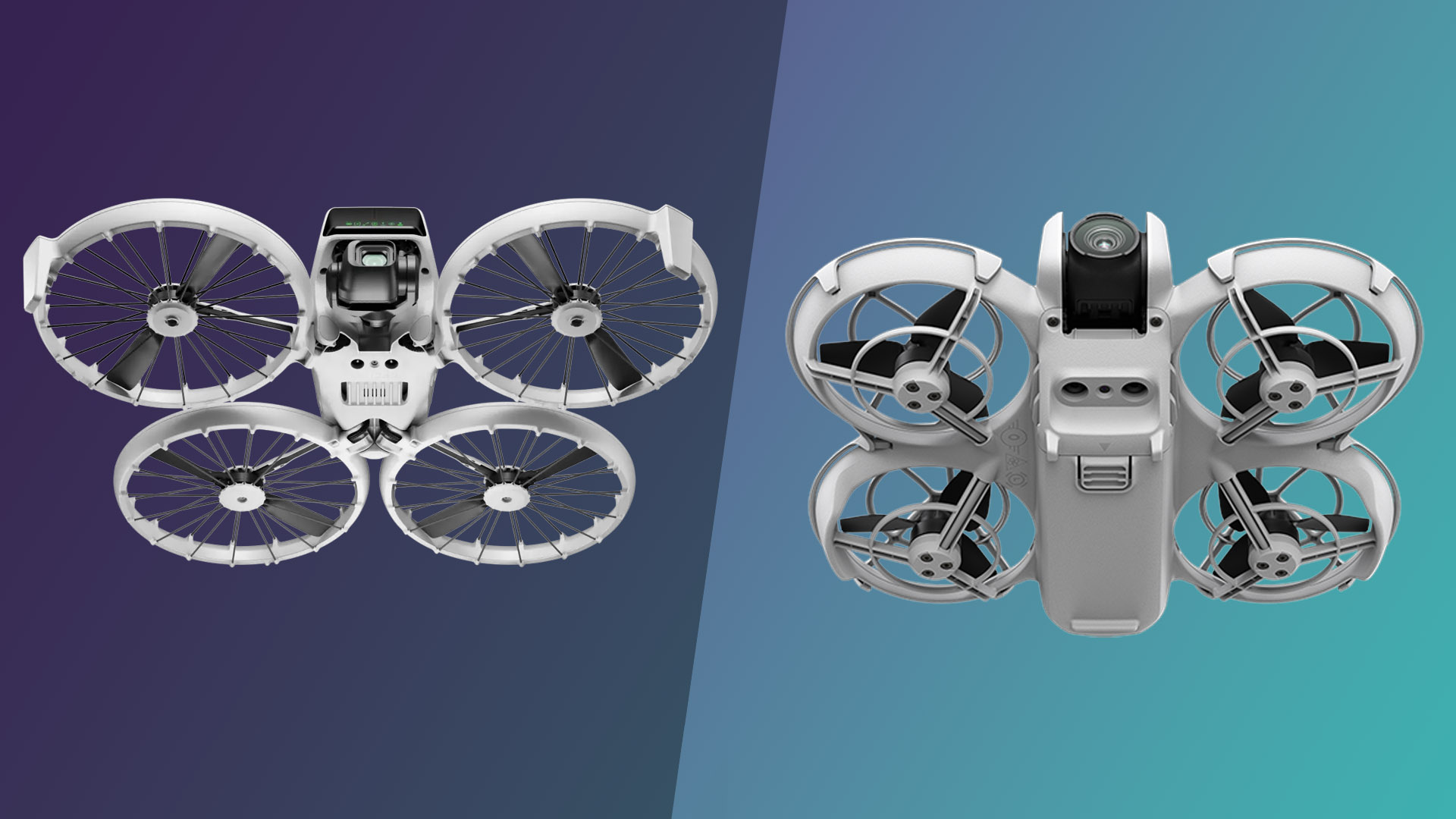
4. DJI Flip vs DJI Neo: Sensors and battery life
- DJI Flip: front and downward sensors, up to 28 minutes flight time
- DJI Neo: No sensors, up to 18 minutes flight time
The DJI Neo’s flight sensor array is as simple as they come. It uses its camera to look out for obstacles, and that’s it.
A Flip has both its camera and infrared sensors for both forward motion and underneath the drone. This makes it far better-suited for flying at night.
DJI says you should not use the Neo for night flying — and owners have had mixed success with their attempts. The key is basically to lift off somewhere with enough light for the sensor system to navigate, and not hang about too long in the dark to avoid the sensor system getting hopelessly lost. But the DJI Flip is rated for navigation in light conditions down to 15 lux, matching the DJI Mini 4 Pro.
Neither drone is meant to be used over water — a natural enemy for the non-water-resistant drone — but the DJI Flip is going to fare better thanks to its improved sensor array. Don’t get cocky, though, as these sensors do not too well with reflective surfaces, and the Flip manual states “DO NOT fly over water.” You’ve been warned.
The larger size of the DJI Flip allows for a much larger battery, 3,110mAh versus 1,435 mAh, and despite the Neo’s lower weight the Flip still provides much better flight time. It can fly for up to 31 minutes (28 min hovering) while the Neo is only rated for 18 minutes.
Having multiple batteries is going to be even more important with the DJI Neo. And it’s not made for more ambitious shoots anyway. It has a shorter transmission range of up to 7km, versus 13km. Not that it’s likely, or sensible, these limits will realistically be tested in normal use — and transmission range for the video preview naturally far shorter.
What’s more important is they both support the same O4 transmission system when using a controller, allowing for a video feed of up to 1080p/60. This matches the more expensive DJI Mini 4 Pro.
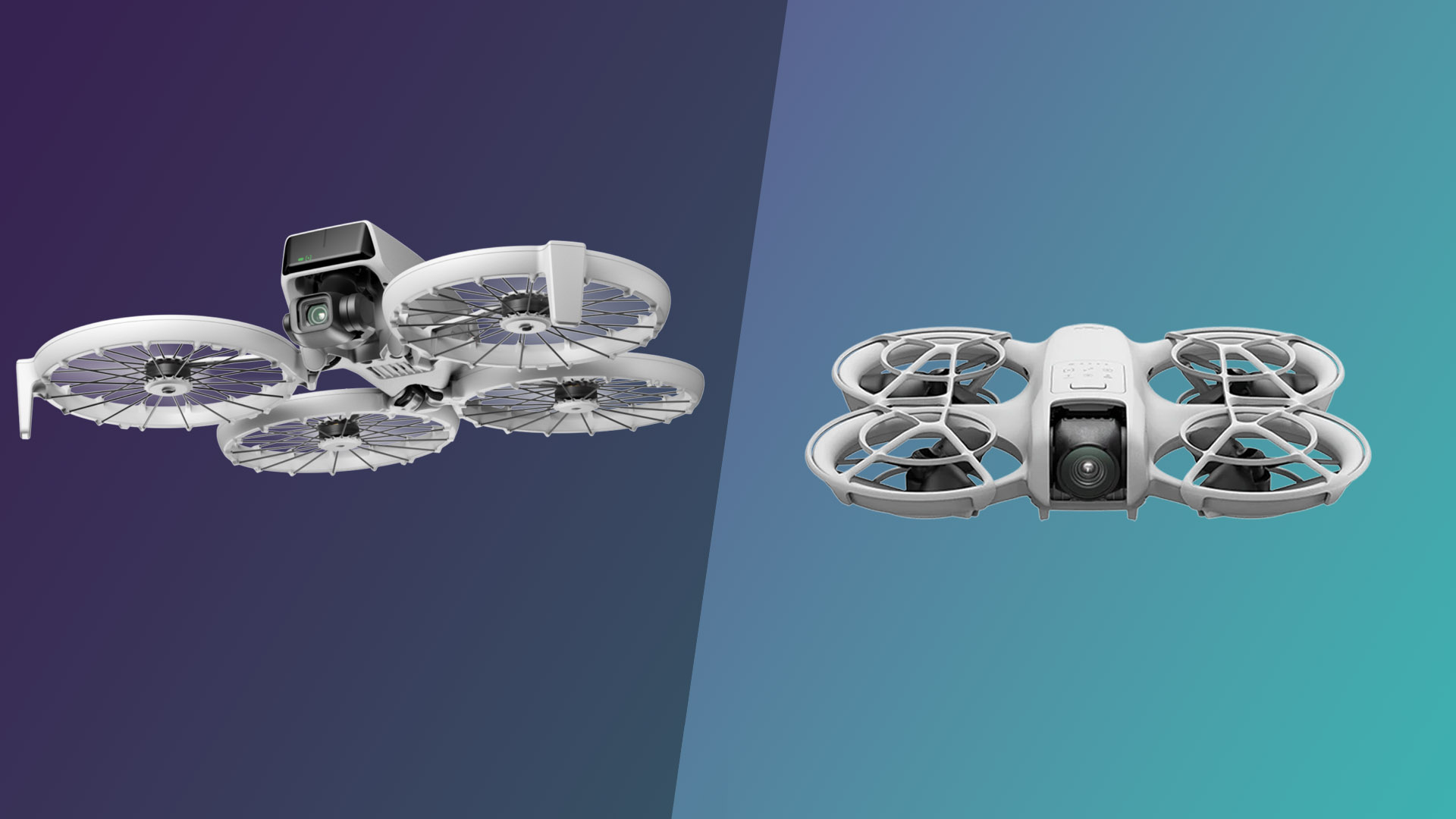
5. DJI Flip vs DJI Neo: Camera
- DJI Flip: 3-axis gimbal camera, 1/1.3-inch 48-megapixel sensor, 4K 60p video, plus 100fps slow-mo
- DJI Neo: No gimbal, 1/2-inch 12-megapixel sensor, 4K 30p video
The DJI Flip has a clearly superior camera to the DJI Neo, on a few fronts.
First up, it has a 3-axis gimbal system capable of providing proper physical stabilization, where the Neo relies on electronic stabilization (EIS). Not only is the gimbal approach less likely to cause image distortions, it means the Flip doesn’t have to eat into its usable sensor area for stabilization – EIS crops into the sensor to leave a motion compensation buffer on the outside, shrinking the amount of sensor actively used in the final footage.
The DJI Flip has a larger and much higher camera sensor too, a 1/1.3-inch 48-megapixel sensor. The Neo has a 1/2-inch 12-megapixel one. Both cameras can record at up to 4K resolution, but the DJI Flip’s image quality is better, and its frame rate options far superior. It can record at up to 60fps with HDR, and there’s a 100fps slo-mo 4K mode.
The Neo is limited to 4K at 30 frames per second, and can only reach 60fps at Full HD. It’s not nearly as serious a video shooter at the Flip, which also has a D-Log flat profile for better color grading flexibility, and much higher maximum video bitrate. The Neo taps out at 75Mbps, the Flip at 150Mbps. But then again you wouldn’t want to have to deal with too high a bit-rate in the Neo when your storage is limited to 22GB.
Both cameras can shoot vertical video, despite the lack of a camera gimbal that can physically move the sensor by 90-degrees. They simply have the pixels to spare. The DJI Neo can hack 1080p at Full HD vertical (60fps). The DJI Flip can shoot at up to 2.7k, although the frame rate is limited to max 30fps.
Early Verdict

The DJI Flip easily beats the DJI Neo for content creators. It has a much higher-quality camera, videographer-friendly shooting modes and microSD support so you don’t keep having to flush the internal memory.
DJI’s Neo shines for folks who don’t want to spend much at all, and will be happy with controlling it via phone app rather than a dedicated controller. A proper controller is an option, but the base Neo kit doesn’t include one. Cost is key with a Neo.
There’s one part of the Neo that shouldn’t be ignored, though: FPV. It can become an acrobatic drone in a manner the Flip just can’t. It’s mounds of fun, although that FPV package costs more than double the cost of the Neo alone.
You might also like
Get daily insight, inspiration and deals in your inbox
Sign up for breaking news, reviews, opinion, top tech deals, and more.
Andrew is a freelance journalist and has been writing and editing for some of the UK's top tech and lifestyle publications including TrustedReviews, Stuff, T3, TechRadar, Lifehacker and others.
You must confirm your public display name before commenting
Please logout and then login again, you will then be prompted to enter your display name.
